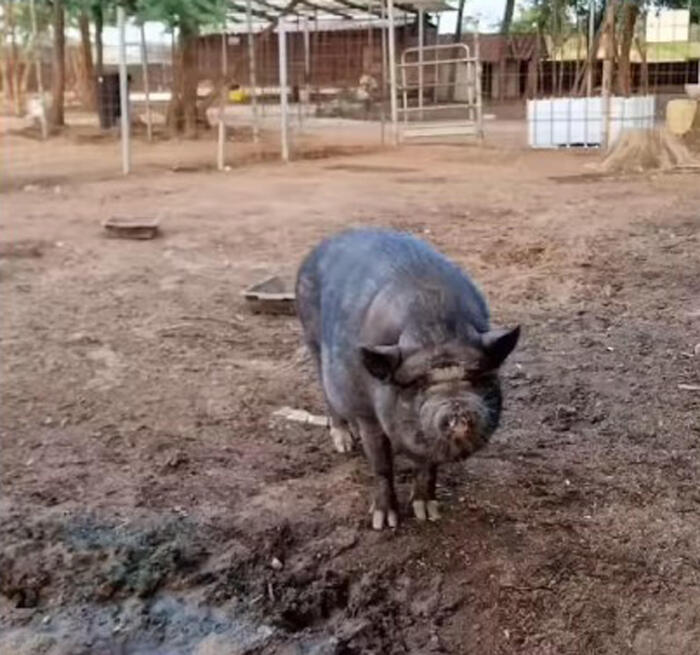A boar in which Chernobyl still shines
Created: 01/28/2022, 07:11
By: Andreas Höger
A wild boar was killed for the first time in a hunting ground in Holzkirchner - and brought to light an incriminating legacy (symbol image) © Lino Mirgeler
Robert Wiechmann was about to leave his hunting shelter in Teufelsgraben.
A wild boar trotted into view.
The shot landed, the area's first pig in years had been killed.
However: The meat is radioactive - a result of the Chernobyl disaster 36 years ago.
A warning for the hunter who is politically active not to back the wrong horse when it comes to energy policy.
Holzkirchen
– Coincidence helped on this January morning – and luck in the hunt. "I'm not an experienced wild boar hunter," admits Robert Wiechmann (58). Professionally, he is responsible for the Office for Food, Agriculture and Forestry (AELF) as a civil servant forester for the Holzkirchen forest district. He is politically committed to the Greens in the market town council and in the district council. Personal hunting in Roggersdorf "is my private matter," as he emphasizes. The Holzkirchner has been stalking there for many years, he had never hunted down a wild boar there before. However, he noticed tracks in the snow at the beginning of January. "I knew there were pigs around."
The clever animals apparently use the Teufelsgraben as a movement axis.
"This is still a wild boar outskirts," says Wiechmann.
However, the populations are constantly expanding.
So far, the gangs have worked their way south from the Hofoldinger forest;
Pigs are regularly killed in the Föching area.
As Wiechmann explains, a “second train” was coming from the west.
More and more sightings are being registered from the districts in Sachsenkam and Hartpenning.
"Even in Bad Wiessee, sows are now being shot," says Wiechmann.
Wild boars raise concerns about crop damage
The pigs don't hurt the trees, but they can cause a lot of damage in fields and meadows.
"That's easy to calculate with maize," says Wiechmann, "but grassland damage can quickly become really expensive." Hunters are liable to the landowner for such game damage, as is documented in many leases.
Keeping stocks short is therefore advisable in all districts, emphasizes Wiechmann.
An important help here is the now legal use of night vision devices when hunting wild boar.
"The key to success," Wiechmann believes, "is what everyone who has a lot to do with wild boar says."
The rapidly growing stocks in southern Bavaria are also benefiting from the growing food supply: corn fields everywhere, heaps of fattening years, for example beech trees, shorter winters and thus also climate change - all of this favors the already high reproduction rate of pigs.
"There is too much energy in the forest and in the fields, the pigs know how to use it," says Wiechmann, who urgently warns against feeding the animals.
On the other hand, walkers need not be afraid.
"The pigs run away as soon as they smell people."
Inedible: the meat of the two-year-old cub was too radioactive and had to be disposed of.
© private
Radiated: Flesh of the animal had to be disposed of
However, the wind on that cold January day in the Teufelsgraben was such that the two-year-old "defect" - a young boar who sometimes goes long distances in search of a mate - did not notice the hunter.
Wiechmann loaded 45 kilos of live weight into the car.
“I also hunt to eat.
I would have liked to have eaten the pig.” But nothing came of it.
The radioactivity test prescribed for wild boar, which is obligatory if the meat is to be "put on the market", showed a contamination of 1200 to 1300 becquerels.
The limit in Germany is 600 becquerels.
Wiechmann had to dispose of the meat, but can at least hope for compensation from the state.
The fact that radioactive fallout from the nuclear disaster in Chernobyl (then USSR, now Ukraine) in 1986 was still found in the Teufelsgraben boar did not surprise him, says Wiechmann.
"Hunters know that." But the population is little aware of the high levels of pollution in the deeper forest layers.
The radiation sits at a depth of 10 to 30 centimetres, the wild boar dig for food in this layer.
"I was hired at the time of Chernobyl," says Wiechmann, "and a career later I shoot an animal that has the reactor accident inside it." That's why he's stunned when nuclear power is currently picking up again in Europe and for investors as " green” should be classified.
"Unfortunately, some people are forgetful."
Not all killed pigs are contaminated
Not all wild boar shot in the county are above the 600 becquerel (Bq/kg) limit.
In the previous year, only three out of 22 animals were more heavily burdened.
In 2020, however, almost half of the 35 animals exceeded 600 Bq/kg.
Significantly less radiation accumulated in the wild boar shot in 2019;
only four out of 27 pieces exceeded the limit.
Two pigs have already been reported to the district office this year – one of them the contaminated Teufelsgraben boar.
Also read: 35 years after Chernobyl: wild boars often irradiated - laboratory assistant tests in Irschenberg







